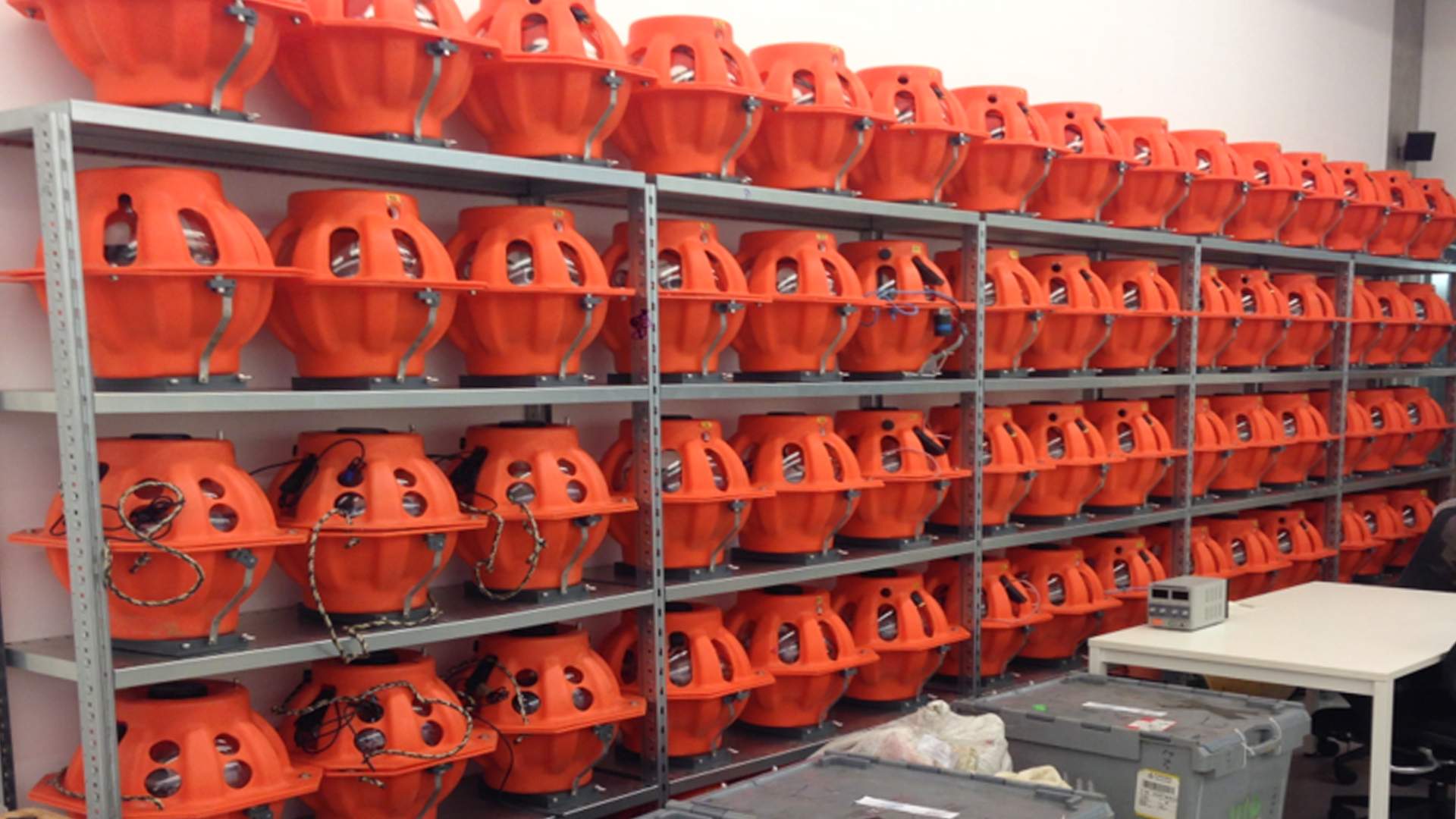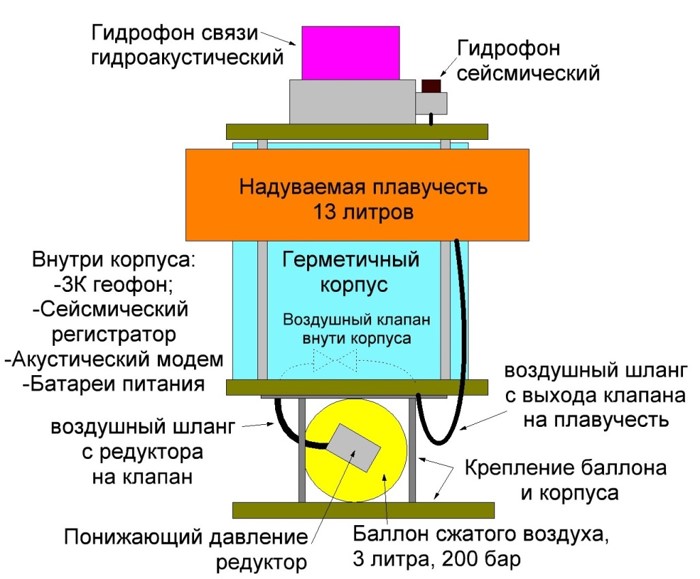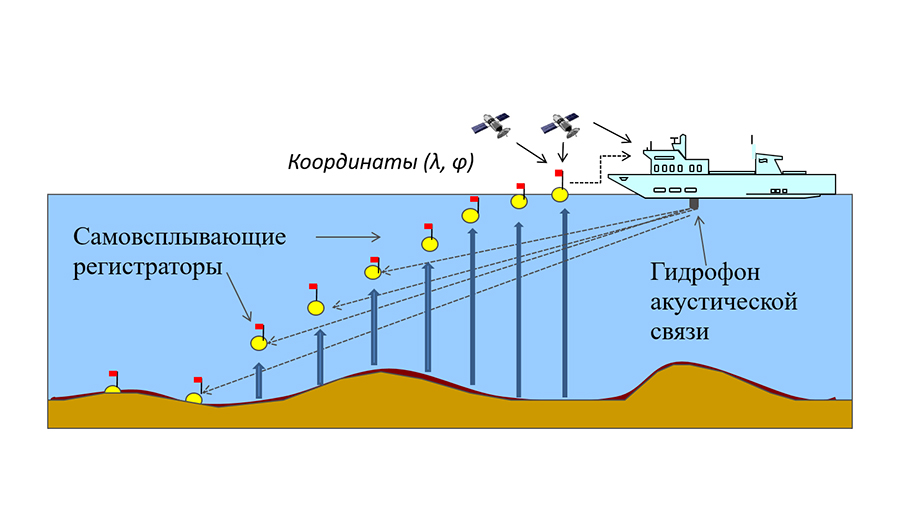- Статьи
- Science and technology
- Digging deep: underwater seismic robots will find oil and gas on the ocean shelf
Digging deep: underwater seismic robots will find oil and gas on the ocean shelf

Russian scientists have developed automated stations for underwater seismic exploration. The equipment includes a set of sensors for recording crustal vibrations and acoustic waves in water and underwater soil. The use of such devices will help to optimize the search and exploration of offshore oil, gas and other mineral deposits, as well as to monitor anthropogenic activity in the territorial waters and exclusive economic zone of Russia.
What are bottom seismographs
Scientists at the Shirshov Institute of Oceanology. P.P. Shirshov Institute of Oceanology of the Russian Academy of Sciences have developed a technology and created an autonomous complex for long-term bottom seismic research. The system will make it possible to study the least studied areas of the Earth's crust, which are hidden under the ocean water columns, as well as to search for oil and gas deposits on the ocean shelf.
As the developers explained, the complex includes a network of underwater bottom stations. They are equipped with devices for long-term autonomous recording of seismic and hydroacoustic vibrations. Such devices record both natural seismic waves caused by tectonic processes in the earth's interior and artificially generated signals.
- The study of seismic wave propagation provides basic information about the structure and composition of our planet. And since its surface is 2/3 hidden under water, the progress in Earth sciences is directly related to the number of seismoacoustic devices operating on the bottom of the seas and oceans, - explained "Izvestia" senior researcher of the laboratory of underwater research and testing techniques "Marine Engineering" IO RAS Dmitry Ilyinsky.
He said that underwater seismic stations have a strong glass spherical body, withstanding pressure up to 7 km depth and placed in a plastic casing. Seismographs, data recording and underwater communication systems are housed inside, while measuring and communication hydrophones are placed outside. The stations record seismic and sound waves that propagate through the Earth's interior and in the aquatic environment.
Applications of deep-sea stations
In the process of realization of the project on creation of the underwater research complex, a number of innovative solutions were implemented, the specialist noted. The main ones are low power consumption of the station's electronic components, wireless communication with the station on deck, including fast copying of collected data, as well as automatic synchronization of clocks through the radio-transparent hull based on GPS signals and an anchor consisting of a mixture of biodegradable components, which remains on the bottom after the station surfaces. These mixtures are also the author's development, protected by a Russian patent. Once left on the bottom, such cargo dissolves in water without damaging the environment. In addition, the option of equipping the research complexes with variable buoyancy systems, which will allow them to do without anchors at all, has been worked out.

- In the future it will be realized the possibility of transmitting information without surfacing stations through an optical channel. For this purpose, underwater drones will be used, which are being developed at the domestic enterprise. Combining the complex of bottom seismic survey and underwater drones will make it possible to carry out hydrocarbon exploration in such specific conditions as water areas covered with ice," the scientist said.
At the same time, the developer added, the bottom stations will be able to register noises of underwater and surface equipment and control unwanted man-made activity in the territorial waters and exclusive economic zone of Russia. This is especially relevant in the context of international rivalry over the Arctic.
According to him, various prototypes of the proposed equipment have been tested and used for data acquisition in scientific and industrial seismic projects for the last 10 years. At the same time, the equipment has been continuously improved. In the 2024 season, this equipment was used for depth studies in the Barents Sea.
Currently, taking into account the results of testing under the new scientific program of the Ministry of Education and Science, technical documentation for serial production of bottom seismographs has been prepared. According to preliminary estimates, their cost will be five to six times lower than foreign analogs.
Why look for oil and gas on the shelf
- There are huge oil and gas reserves on the Russian Arctic shelf. According to Rosnedra, reserves in the Arctic alone are estimated at 85 trillion cubic meters and 17 billion tons respectively. However, the shelf area is also huge. Therefore, we need technologies that allow us to quickly, inexpensively and reliably assess these reserves and identify promising fields. Scientists from IO RAS offer quite simple methods and equipment for these purposes, - said "Izvestia" pro-rector for oil and gas technologies, nature management and earth sciences of Kazan Federal University, Doctor of Geological and Mineralogical Sciences Danis Nurgaliyev.

He noted that there are factors that limit the proposed technology. In particular, modern batteries required for underwater stations are not powerful enough. Also, the cost of such apparatuses known on the market is high, which makes it difficult to introduce them on a mass scale.
- Moving oil and gas production to the shelf is one of the industry trends. Today in the world 40% of black gold and 30% of blue fuel are extracted offshore. This is due, in particular, to the depletion of onshore fields, as well as the development of the natural gas liquefaction industry, which simplifies the monetization of resources," explained Valery Andrianov, Associate Professor at the Financial University under the Government of the Russian Federation.
He added that today, in fact, there are no reliable technologies for hydrocarbon production in ice conditions. Therefore, only the Prirazlomnoye field, which is located in the Barents Sea, the warmest of the northern seas, is producing on the Russian shelf. In 2014, the giant Pobeda field was discovered on the Kara Sea shelf, but it is not being developed yet.
There are other Arctic offshore projects, but their implementation is unlikely now due to the relatively low cost of hydrocarbons, production curbs under the OPEC+ agreement and still undeveloped fields in Eastern Siberia and deep horizons of Western Siberia, Valery Andrianov noted. Nevertheless, it is necessary to continue exploration in the Arctic, because, for example, the draft energy strategy of the Russian Federation until 2050 assumes that production will remain at the current level. This means that it is necessary to prepare new promising fields in advance, including on the shelf, summarized the expert.
Переведено сервисом «Яндекс Переводчик»



